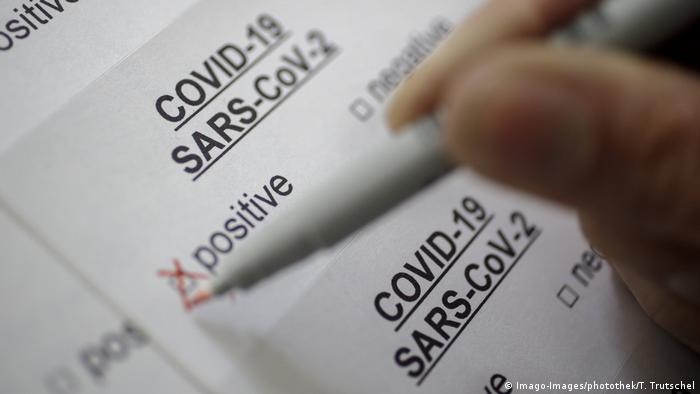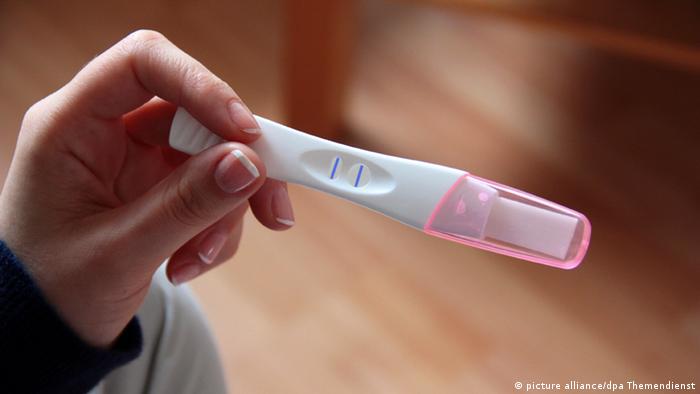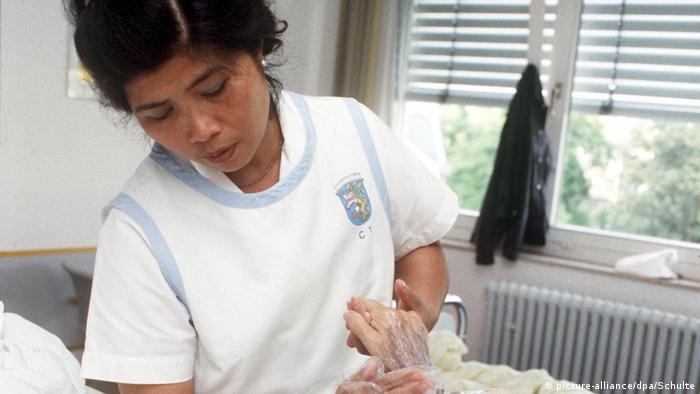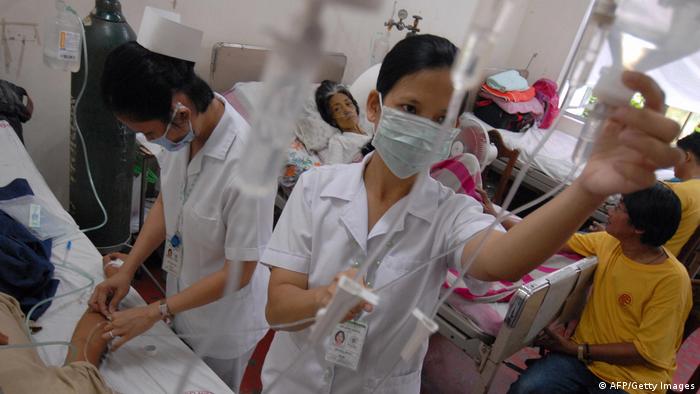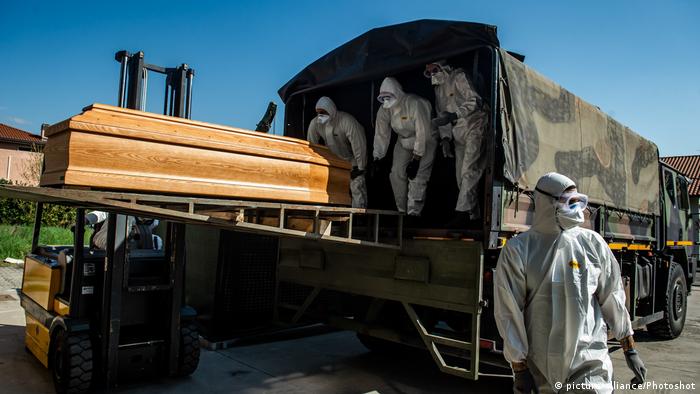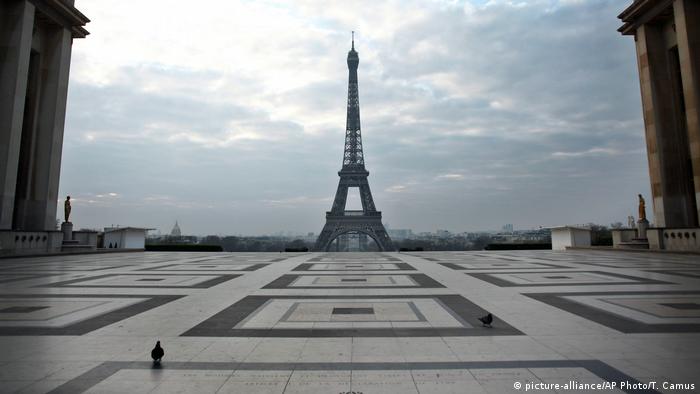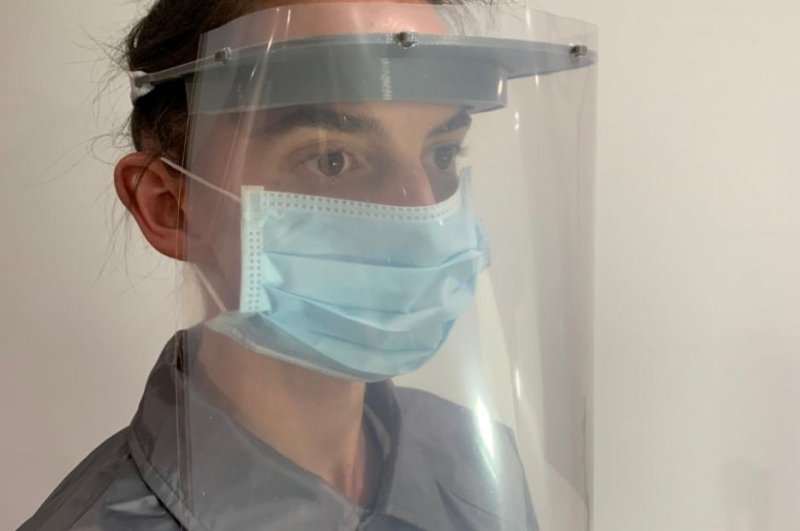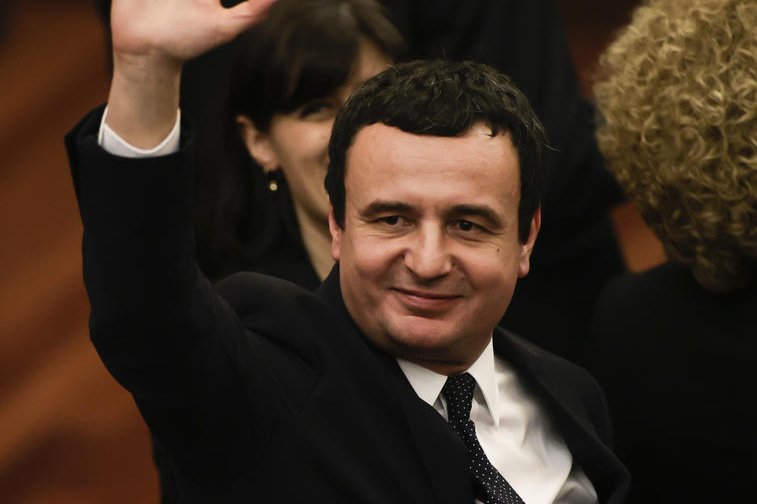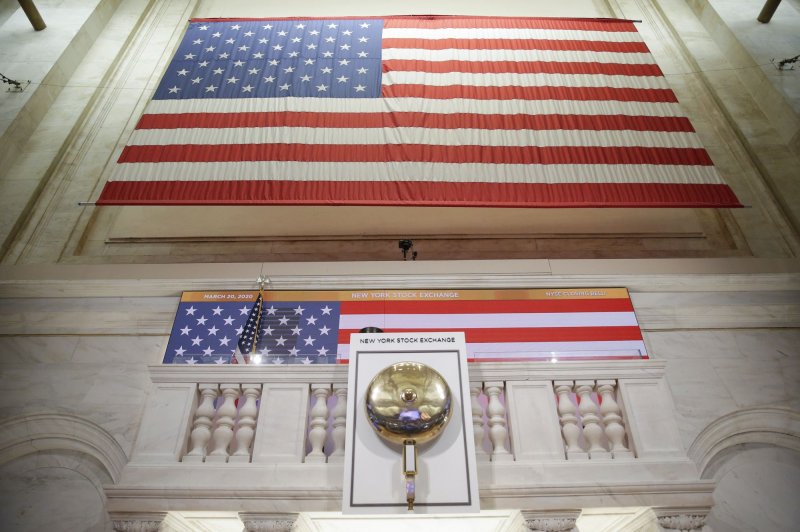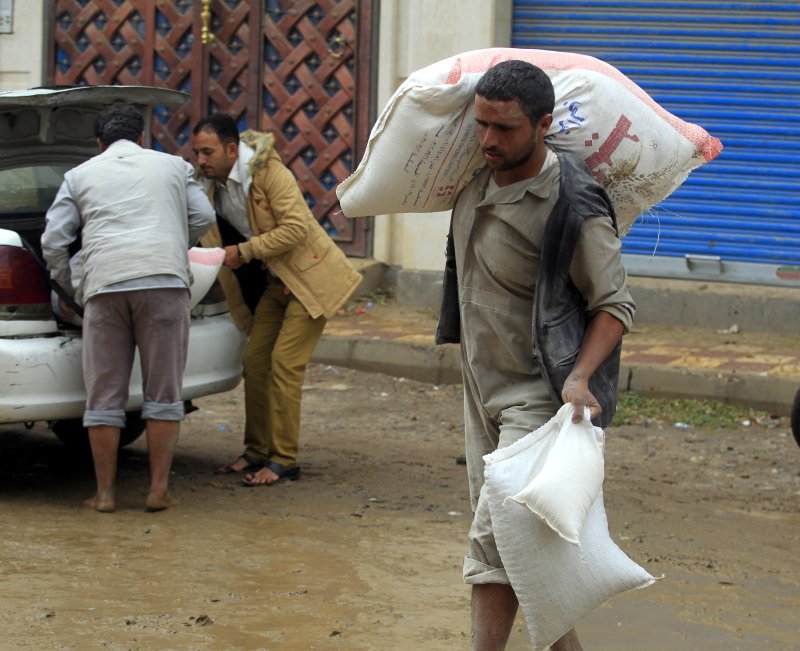27/03/2020

France shut schools across the country on March 13, 2020,
to stop the spread of the deadly coronavirus. © Pascal Pavani, AFP
Text by:Benjamin DODMAN
Although French schools are officially shut, some continue to care for the children of key workers on the coronavirus frontline. FRANCE 24 spoke to teachers who volunteer to look after health workers’ offspring even as they grapple with the challenges of home-schooling.
Like many of her colleagues across France, Nathalie Carboni-Latour didn’t think twice about returning to school when the call for volunteers came through.
Located in eastern Paris, her nursery school closed its gates on Friday, March 13, along with more than 61,000 other schools scattered across France. But, as the entire country went into lockdown just days later, the headmistress was soon back at work catering for a specific public: the children of health workers fighting the coronavirus pandemic.
“That’s what public service is about, we’re not just salaried workers,” she says. The idea of offering some support to health professionals on the frontline of the pandemic only made the decision to volunteer more obvious.
Carboni-Latour began by drawing up lists of parents who were eligible for the scheme, while the inspectors of the Paris academy looked for volunteers, giving priority to the teachers for whom it would be easier – and safer – to return to school.
“Not everyone can volunteer in the present circumstances,” she explains. “Some have their own children to look after or a medical condition that places them at risk. Many teachers also live far out, meaning they would face long journeys on public transport and thus a greater risk of infection.”
‘Infection hubs’
Being able to cycle to work made it easier for Caroline, a nursery school teacher, to volunteer at one of the 28 schools that are still open in the French capital. The fact that her partner can work from home, and thus look after their children, was another precondition.
At her school in southern Paris, four teachers and two headmistresses take it in turns to look after some 15 children of various ages. Other schools, including Carboni-Latour’s, cater to slightly larger groups. The education ministry says more than 28,000 pupils benefited from the scheme nationwide during the first week of lockdown.
“It seemed pretty obvious to me that I should try and help out,” says Caroline. “If it means health professionals are free to look after the sick, then it’s well worth it.”
In countries across the world, school closures and lockdown measures have presented emergency services with a quandary even as they face unprecedented surges in patient numbers. In Italy, the country worst affected by the pandemic and the first to close schools nationwide, many hospital nurses were forced to drop out at a critical time to look after their children. Similar staff shortfalls have been reported in some US states, with hospitals reaching out to temporary staff agencies and exploring other ways to maintain workforce levels as childcare presents a major challenge.
With French emergency rooms already overwhelmed, the Paris education authority has decided to keep some schools – those closest to key hospitals – open on weekends too. Other authorities have also adopted more flexible timetables, but there is a limit to how much flexibility schools operating on skeleton teams can offer.
Cécile Morini-Dornier, who runs a primary school in a rural area in the Seine-et-Marne department, east of Paris, says some health workers expressed interest in the scheme “but had to find another solution, because they leave for work at dawn, when the school is shut”.
Other parents prefer not to expose their children, or other people’s children, to the threat of contagion at school.
“We’re a welcome hub, but we’re also an infection hub,” says the headmistress, noting that the children of health professionals are, by definition, particularly exposed to the virus.
Social distancing for children
The level of protection afforded to teachers varies significantly depending on where they teach. In Paris, teachers’ unions have fought hard to ensure volunteers are given adequate protection, says Carboni-Latour, a member of the SNUipp-FSU union.
“We know the virus spreads easily among children, who often don’t present symptoms, so we are naturally exposed too,” she explains. At her school in the capital’s 20th arrondissement, one teacher has already tested positive for COVID-19, along with a number pupils and parents.
Over in the 14th arrondissement, Caroline and her colleagues are equipped with hand gel, gloves, masks and overalls – a somewhat cumbersome attire when dealing with small children.
“We thought it would be a frightening experience for the pupils, coming to a different school, with different classmates and new teachers who greet them with masks,” says the volunteer, who was surprised to find that most pupils were not the least bit troubled or scared.
In fact the real challenge is quite the opposite: getting children to be a little more circumspect at a time when objects and people are potential virus-carriers. In that respect, there is only so much teachers can do, Caroline explains.
“We’re talking about small children to whom the notion of ‘barrier gestures’ and ‘safe distancing’ are hard to comprehend,” she says. “It’s not like we can push them away when they reach out for us.”
‘We’re inventing rules as we go along’
Elsewhere in France, school workers have complained of a lack of protective gear, venting their frustration on social media. One teacher said she had brought her own mask to school, only to be told to take it off by her headmaster.
In Seine-et-Marne, Morini-Dornier and her colleagues brought their own hand gel to school and scrambled to find other equipment, including “old masks from the days of bird flu”. She laments the education ministry’s failure to come up with a national procurement plan for such basic protection as face masks.
“We’re inventing rules as we go along,” she says of the many different challenges presented by the coronavirus pandemic. “Less than two weeks ago, all we told our pupils was to wash their hands. Now we’re having to rethink the whole way we go about schooling.”
Morini-Dornier juggles her work at the school with the whole new challenge of providing online teaching for the 12.4 million pupils currently under lockdown across France – a mammoth enterprise that soon proved to be even more complex and time-consuming than ordinary classroom teaching.
Teachers across France were naturally incensed this week when the government spokeswoman, Sibeth Ndiaye, quipped that they would not be asked to plug a shortage of manpower at French farms, despite the fact that “teachers are not working at the moment since schools are shut”.
According to the Press Secretary of the French government (@SibethNdiaye), teachers are currently "not working" because schools are closed. How do you say, WTF, en français? https://t.co/3XqbDgJLc6— Michael Stambolis (@mstambolis) March 25, 2020
The gaffe, for which Ndiaye subsequently apologised on Twitter, reflects “the way all too many people view the profession”, sighs Caroline. She says she shares the frustration voiced by health professionals, who have long complained about the neglect suffered by public services – a neglect for which the French, and health workers in particular, are now paying a heavy price.
With experts warning that the pandemic is yet to peak in France, Caroline and her colleagues are bracing for several more weeks of home-schooling and looking after health workers’ children. Already the scheme has been expanded to include the children of key social workers, and more may follow.
“We’ll keep adapting as the needs change,” says Morini-Dornier, whose primary school will soon start welcoming nursery school children too. “At least until we fall ill in turn.”
Although French schools are officially shut, some continue to care for the children of key workers on the coronavirus frontline. FRANCE 24 spoke to teachers who volunteer to look after health workers’ offspring even as they grapple with the challenges of home-schooling.
Like many of her colleagues across France, Nathalie Carboni-Latour didn’t think twice about returning to school when the call for volunteers came through.
Located in eastern Paris, her nursery school closed its gates on Friday, March 13, along with more than 61,000 other schools scattered across France. But, as the entire country went into lockdown just days later, the headmistress was soon back at work catering for a specific public: the children of health workers fighting the coronavirus pandemic.
“That’s what public service is about, we’re not just salaried workers,” she says. The idea of offering some support to health professionals on the frontline of the pandemic only made the decision to volunteer more obvious.
Carboni-Latour began by drawing up lists of parents who were eligible for the scheme, while the inspectors of the Paris academy looked for volunteers, giving priority to the teachers for whom it would be easier – and safer – to return to school.
“Not everyone can volunteer in the present circumstances,” she explains. “Some have their own children to look after or a medical condition that places them at risk. Many teachers also live far out, meaning they would face long journeys on public transport and thus a greater risk of infection.”
‘Infection hubs’
Being able to cycle to work made it easier for Caroline, a nursery school teacher, to volunteer at one of the 28 schools that are still open in the French capital. The fact that her partner can work from home, and thus look after their children, was another precondition.
At her school in southern Paris, four teachers and two headmistresses take it in turns to look after some 15 children of various ages. Other schools, including Carboni-Latour’s, cater to slightly larger groups. The education ministry says more than 28,000 pupils benefited from the scheme nationwide during the first week of lockdown.
“It seemed pretty obvious to me that I should try and help out,” says Caroline. “If it means health professionals are free to look after the sick, then it’s well worth it.”
In countries across the world, school closures and lockdown measures have presented emergency services with a quandary even as they face unprecedented surges in patient numbers. In Italy, the country worst affected by the pandemic and the first to close schools nationwide, many hospital nurses were forced to drop out at a critical time to look after their children. Similar staff shortfalls have been reported in some US states, with hospitals reaching out to temporary staff agencies and exploring other ways to maintain workforce levels as childcare presents a major challenge.
With French emergency rooms already overwhelmed, the Paris education authority has decided to keep some schools – those closest to key hospitals – open on weekends too. Other authorities have also adopted more flexible timetables, but there is a limit to how much flexibility schools operating on skeleton teams can offer.
Cécile Morini-Dornier, who runs a primary school in a rural area in the Seine-et-Marne department, east of Paris, says some health workers expressed interest in the scheme “but had to find another solution, because they leave for work at dawn, when the school is shut”.
Other parents prefer not to expose their children, or other people’s children, to the threat of contagion at school.
“We’re a welcome hub, but we’re also an infection hub,” says the headmistress, noting that the children of health professionals are, by definition, particularly exposed to the virus.
Social distancing for children
The level of protection afforded to teachers varies significantly depending on where they teach. In Paris, teachers’ unions have fought hard to ensure volunteers are given adequate protection, says Carboni-Latour, a member of the SNUipp-FSU union.
“We know the virus spreads easily among children, who often don’t present symptoms, so we are naturally exposed too,” she explains. At her school in the capital’s 20th arrondissement, one teacher has already tested positive for COVID-19, along with a number pupils and parents.
Over in the 14th arrondissement, Caroline and her colleagues are equipped with hand gel, gloves, masks and overalls – a somewhat cumbersome attire when dealing with small children.
“We thought it would be a frightening experience for the pupils, coming to a different school, with different classmates and new teachers who greet them with masks,” says the volunteer, who was surprised to find that most pupils were not the least bit troubled or scared.
In fact the real challenge is quite the opposite: getting children to be a little more circumspect at a time when objects and people are potential virus-carriers. In that respect, there is only so much teachers can do, Caroline explains.
“We’re talking about small children to whom the notion of ‘barrier gestures’ and ‘safe distancing’ are hard to comprehend,” she says. “It’s not like we can push them away when they reach out for us.”
‘We’re inventing rules as we go along’
Elsewhere in France, school workers have complained of a lack of protective gear, venting their frustration on social media. One teacher said she had brought her own mask to school, only to be told to take it off by her headmaster.
In Seine-et-Marne, Morini-Dornier and her colleagues brought their own hand gel to school and scrambled to find other equipment, including “old masks from the days of bird flu”. She laments the education ministry’s failure to come up with a national procurement plan for such basic protection as face masks.
“We’re inventing rules as we go along,” she says of the many different challenges presented by the coronavirus pandemic. “Less than two weeks ago, all we told our pupils was to wash their hands. Now we’re having to rethink the whole way we go about schooling.”
Morini-Dornier juggles her work at the school with the whole new challenge of providing online teaching for the 12.4 million pupils currently under lockdown across France – a mammoth enterprise that soon proved to be even more complex and time-consuming than ordinary classroom teaching.
Teachers across France were naturally incensed this week when the government spokeswoman, Sibeth Ndiaye, quipped that they would not be asked to plug a shortage of manpower at French farms, despite the fact that “teachers are not working at the moment since schools are shut”.
According to the Press Secretary of the French government (@SibethNdiaye), teachers are currently "not working" because schools are closed. How do you say, WTF, en français? https://t.co/3XqbDgJLc6— Michael Stambolis (@mstambolis) March 25, 2020
The gaffe, for which Ndiaye subsequently apologised on Twitter, reflects “the way all too many people view the profession”, sighs Caroline. She says she shares the frustration voiced by health professionals, who have long complained about the neglect suffered by public services – a neglect for which the French, and health workers in particular, are now paying a heavy price.
With experts warning that the pandemic is yet to peak in France, Caroline and her colleagues are bracing for several more weeks of home-schooling and looking after health workers’ children. Already the scheme has been expanded to include the children of key social workers, and more may follow.
“We’ll keep adapting as the needs change,” says Morini-Dornier, whose primary school will soon start welcoming nursery school children too. “At least until we fall ill in turn.”
---30---

